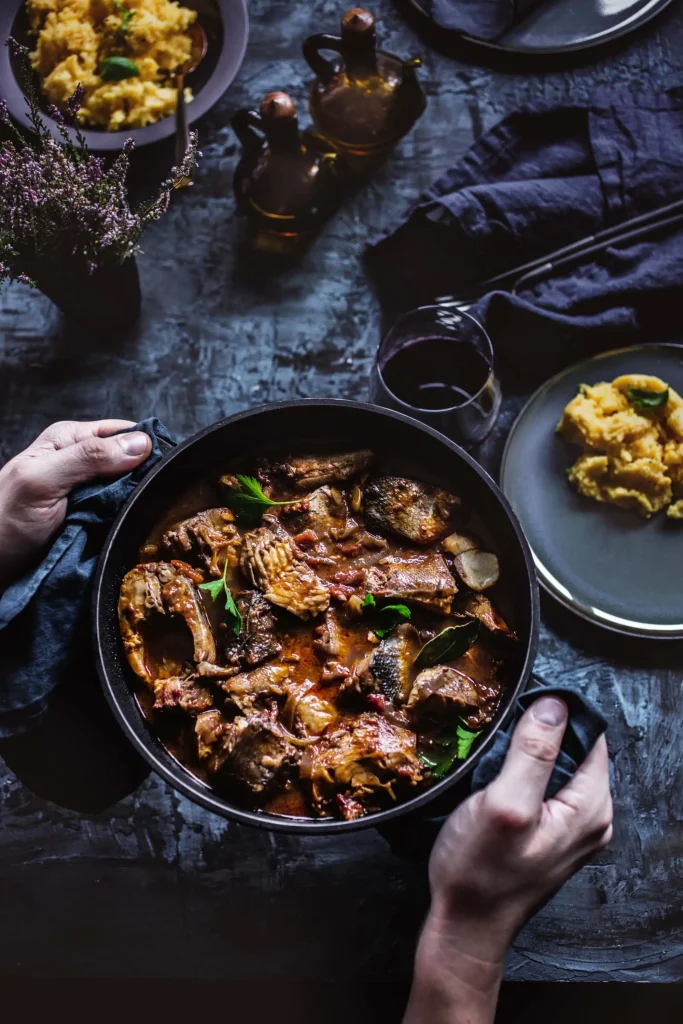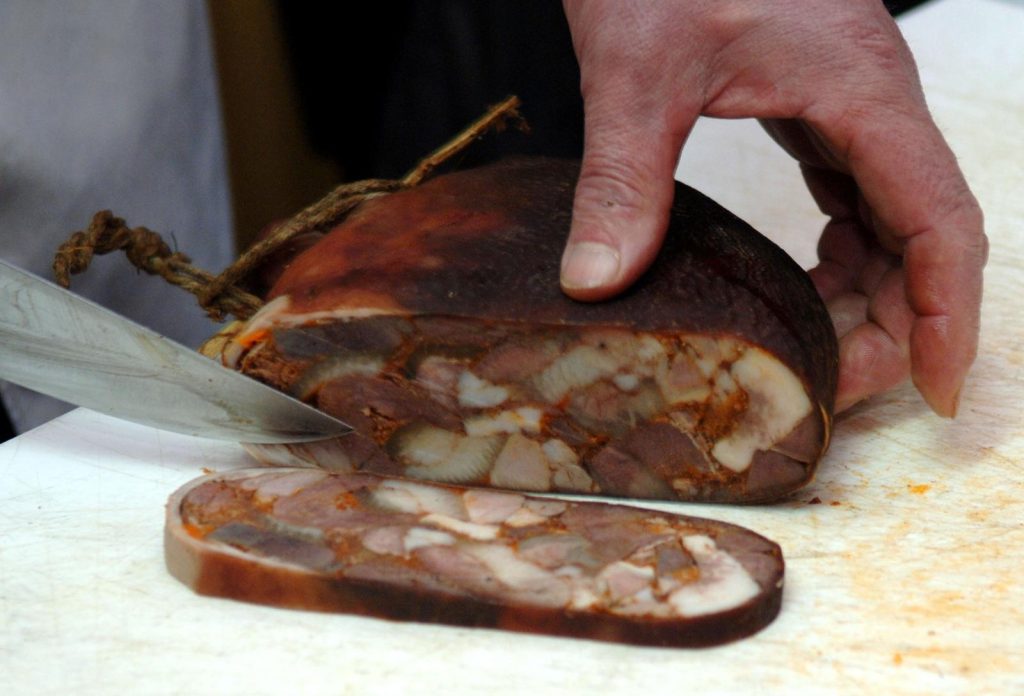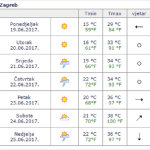November 24, 2023 – TasteAtlas, a global digital guide for local food, has published a list of the ten worst Croatian dishes, or rather nine dishes and one drink. The list included a few unexpected items and local favourites, we do have to say. With how many do you agree?
As SiB writes, there were some sweet and some savoury dishes on the list, as well as an alcoholic drink. At the top of the list of the worst dishes is švargl, a dish dear to many Slavonians. Right behind it is a traditional Slavonian treat of bread with a lard and paprika spread.
And this is how TasteAtlas readers ranked the worst Croatian dishes:
Švargl
This is a type of pressed pork sausage that is usually made from pig’s head, heart, tongue, skin and cheeks. The meat is cooked, deboned and cut into pieces, then seasoned and mixed with a little cooking liquid before being stuffed into a clean pork stomach or intestine. Seasonings used for the meat vary from region to region, but most commonly include salt, black pepper, sweet or spicy paprika, and garlic.
The stuffed sausage is cooked in water over low heat, then cooled and pressed. Also known by other names, including tlačenica or presvurst, this meat product can be consumed after being cooked and pressed or it can be dried in traditional smokehouses for up to two weeks.
Bread, lard and paprika
Bread, lard and paprika is a Croatian specialty that was at the height of its popularity in the war nineties, although it is slowly experiencing a renaissance at Croatian Christmas markets, as it is still a typical winter snack.
It consists of a thicker slice of bread with a spread of pork lard, sprinkled with a little salt and ground paprika on top. Cheap and extremely simple, this snack is often considered a poor man’s meal. However, entire generations of people were raised on this meal in the nineties.
Ston cake
The main ingredient of this rich cake is a type of pasta called makaruli, and their shape is similar to penne pasta. Traditionally, they are prepared in round molds, a thin layer of dough is used as a base, and cooked macaroons are placed inside together with a fragrant mixture of ground almonds or walnuts, grated chocolate, cinnamon and lemon zest.
The combo is covered with a mixture of melted butter and eggs, and the cake is wrapped in dough. As the name suggests, this cake is a recognizable dessert in the town of Ston, but it is often prepared throughout the region.
Istrian soup
Istrian soup may be called soup, but this unusual combination of ingredients does not have many points of contact with traditional soup. The dish is prepared in a clay jug called a bukaleta, and combines spices, olive oil and warmed red wine, preferably the local teran variety.
The soup is accompanied by grilled slices of bread dipped into the aromatic soup. When serving, the wine is sipped slowly, and the bread is usually eaten with a spoon. Once a popular dish, which was mostly cooked to keep people warm during the winter, today it is considered one of the delicacies of this region.
Krvavica
Krvavica is a type of sausage produced throughout continental Croatia, especially in Zagorje, Istria, Dalmatia, Slavonia and Baranja. Apart from Croatia, they are also made in Slovenia and Serbia. They are made by cooking pig’s blood, skin and offal with rice and buckwheat, barley or corn flour, unlike most other European blood sausages, which are filled with oats or oatmeal.
There are many varieties of krvavica and each chef has his own recipe, so the ingredients may vary. The names also vary, and they are also called divenice, devenice or kulenice. These sausages are traditionally consumed during the winter, when they are often accompanied by sauerkraut and potatoes.

Neretva brudet
Of the many varieties of Croatian brudet (type of fish stew), the one originating from the Neretva region is considered unique because eel and frogs, two traditional foods from this area, are most often used in it. Each village in the region is said to have a different recipe, but the basic version involves thoroughly cleaned pieces of eel and frog sautéed in olive oil, onion and garlic.
They are cooked in a combination of seafood stock, tomato sauce and white or red wine, with the addition of fresh tomatoes, chili peppers, and a little vinegar. Although tradition suggests the use of eels and frogs, the dish is usually enriched with other types of fish.
Imotski cake
This tart with a long tradition consists of a base of shortcrust pastry and an aromatic almond filling. Both parts of the tart are generously seasoned with various spices and different types of alcohol, from prosecco or white wine in the dough to cherry liqueur used in the filling.
Gemišt
Gemišt is a Croatian drink of white wine and sparkling mineral water. To prepare it, just mix two well-chilled ingredients in a glass. It is recommended to use dry white wines with higher acidity such as Rhine Riesling, Graševina, Skrlet, Moslavina and Kraljevina.
The name “gemišt” comes from the German word gemischt, which means “mixed”. It is especially popular in summer in central Croatia. Apparently continental Croats have enjoyed their gemišt from the 19th century.
Granatir
Granatir or grenadier march is a simple meal consisting of pasta, onions and potatoes, and it is also strongly seasoned with ground paprika. Due to the cheap ingredients and high carbohydrate content, this dish is a representative of peasant cuisine throughout continental Croatia, and especially in Slavonia, where it is still prepared today. If the pasta is made without eggs, this dish is also suitable for vegans.
Mandulat
Mandulat or bademovac is a traditional dessert from Dalmatia, similar to Italian torrone and Turkish halva. This no-bake cake is made with honey and almonds, a combination that results in an incredibly sweet and high-calorie delight, which can be consumed as a dessert or as a snack.











